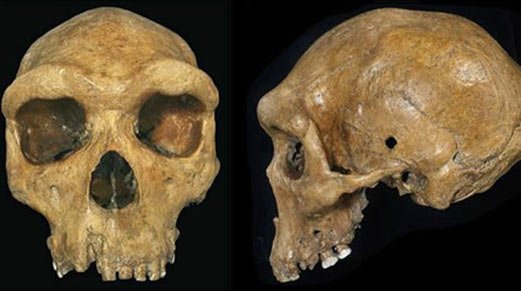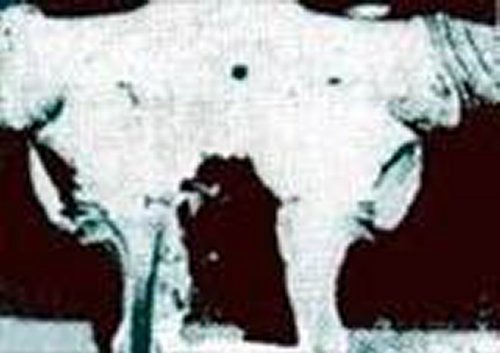Prehistoric Skulls With Bullet Holes: An Unsolved Ancient Mystery – Who Shot Them?
In 1922, a very peculiar Neanderthal skull was found near Kabwe (also known as Broken Hill), Zimbabwe. The skull discovered by Swiss miner Tom Zwiglaar was exceptional because on the left side of the cranium was a small, perfectly round hole.
At first, it was assumed that the hole had been made by a spear or another sharp implement. However, further investigation revealed something much more shocking.
When examining the right side of the so-called Broken Hill skull scientists discovered yet another abnormality. As one of the anthropologists stated, the right side of the cranium had been “blown away” from the inside out.
What kind of object could have caused such damage to the cranium and to whom did the skull belong to?
Initially, scientists believed that it was a new species: Homo rhodesiensis. Today, most scientists assign the Broken Hill skull to Homo heidelbergensis.
When a skull is struck by a relatively low-velocity projectile – such as an arrow, or spear – it produces what are known as radial cracks or striations; that is, minute hairline fractures running away from the place of impact.

As there were no radial fractures on the Neanderthal skull, it was unanimously concluded that the projectile must have had a far, far greater velocity than an arrow or spear. But what?
Rene Noorbergen, researcher and author of the fascinating book Secrets Of The Lost Races commented: “This same feature is seen in modern victims of head wounds received from shots from a high-powered rifle.”
If that is the case, who possessed a power rifle during when the Neanderthal roamed the Earth?
The first humans with proto-Neanderthal traits are believed to have existed in Eurasia as early as 350,000 – 600,000 years ago with the first “true Neanderthals” appearing between 200,000 and 250,000 years ago. According to orthodox science, no such high-tech weapons are believed to have existed at that time.

Still, forensic experts who have studied the skull in Berlin have since concluded that, “The cranial damage to Rhodesian Man’s skull could not have been caused by anything but a bullet”.
The entire story becomes even more intriguing due to the fact that an ancient aurochs (an extinct type of bison) was found in Russia by the Lena River.
It, too, had been shot in the head, thousands of years previously, but had survived for some time, as the bullet hole had calcified.
“This sensational discovery came to the attention of professor Constantin Flerov, curator of Moscow’s Palaeontological Museum of the USSR, who promptly put the skull on display.
Incredible though it sounds, we are faced with quite forceful evidence that, thousands of years ago, someone discharged a bullet into the skull of one of our anthropological cousins and also nearly killed a large mammal by the same method,” The Shields Gazette reported.

One obvious, but very radical solution is to conclude that, contrary to what we have always understood, an ancient man may have been technologically developed to a very high degree. Did a small but advanced civilization develop the concept of ballistics long before the Chinese?
The problem with this idea is that it is too much of a coincidence. Could two separate societies, separated by thousands of years and a vast cultural gulf, have both invented weapons that just happened to fire small, cylindrical projectiles at high speed?
An even more thought-provoking theory is that someone from the future, carrying a firearm, travelled back into the past and engaged in some sort of trans-temporal hunting expedition.